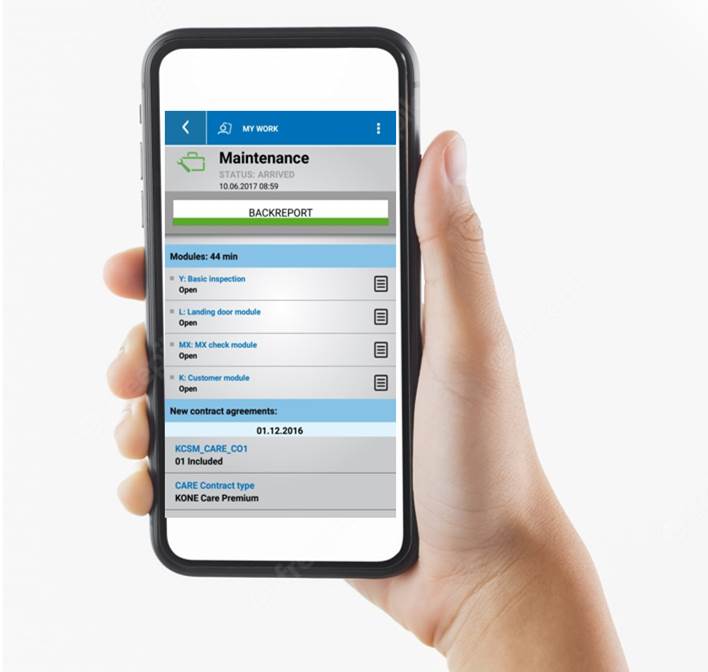During his stint in home renovation, Mr Yip Mow Ching had a habit of spending his downtime at the lift landings of public estates, quietly observing lift technicians carrying out their maintenance work.
He has had an interest in electrical engineering since his schooling days, but seeing it in action only fed his curiosity. Inspired, he decided to turn his passion into reality.
Mr Yip, now 56, entered the lift industry in his early 20s. He worked at two other companies before joining Finnish elevator company KONE in 2004, where he is currently a Senior Technician.
What drew him to KONE was its innovative approach to lift technologies.
“I have witnessed the industry progress from a traditionally mechanical trade to a digitally-enabled one,” he said.
This shift is in line with the Building and Construction Authority’s (BCA) approval of Remote Monitoring and Diagnostics (RM&D) solutions for use in lift maintenance. RM&D systems leverage artificial intelligence (AI) and algorithms to enable predictive maintenance, making recommendations for actions to be taken when maintenance needs arise and reducing the frequency of maintenance visits.
Since 2018, JTC has been bringing lift and tech companies together to develop and trial RM&D solutions, as part of efforts to digitalise the Built Environment sector through smart solutions in facilities management. The trials yielded positive results: RM&D solutions achieved an 85 per cent accuracy in predicting lift faults, demonstrating their effectiveness in improving productivity in lift maintenance.
RISING ABOVE INDUSTRY STANDARDS WITH TECH
Mr Yip’s typical workday sees him visiting two to three sites to carry out his monthly maintenance schedule.
The schedule is assigned automatically via KONE Field Mobility (KFM), a smartphone issued to all KONE technicians. The device is preloaded with an app that not only keeps them updated on daily servicing jobs, but also notifies them of equipment issues and monitors their safety.
|
|
 The KONE Field Mobility (KFM) is a smartphone that is issued to all KONE technicians. Credit: KONE The KONE Field Mobility (KFM) is a smartphone that is issued to all KONE technicians. Credit: KONE
|
|
At each maintenance visit, technicians abide by a carefully-crafted framework outlined in a lift maintenance guidebook by BCA. It includes about 20 criteria that must be satisfied for a lift to pass its checks.
For instance, a lift’s landing door gap cannot be more than 10mm, as this would pose a threat to the safety of lift users. Similarly, the stopping accuracy of the lift car floor must be within 10mm – or ideally, level with the ground – to prevent tripping hazards.
All these maintenance steps are indicated clearly in their service order on the KFM for technicians to check off.
“All criteria are equally important in ensuring the safety of lifts and standardising quality across the industry,” Mr Yip explained.
DIAGNOSING EARLY FOR A SPEEDIER FIX
This monthly routine is sometimes disrupted by emergencies like lift faults.
Repairing a lift is no easy feat. The job can take anywhere between a few minutes to two to three hours, with most of it spent on simply diagnosing the issue. And since the diagnosis is conducted on-site, technicians sometimes have to head back to the office just to collect spare parts they do not have on hand. In other instances, lifts might get stuck between floors, forcing technicians to climb up the stairs to the lift motor room on the highest floor of a building to manually determine the location of the lift.
However, with KONE 24/7 Connected Services, KONE’s cloud-based remote monitoring service, efficiency has improved. Equipped with AI-based analytics that provide 24/7 monitoring, it sends timely and valuable alerts on potential elevator issues as well as real-time information on regular lift operations directly to technicians’ KFMs.
For lift technicians like Mr Yip, this means that a lift issue is diagnosed even before he arrives at a site, saving him and his colleagues one to two hours per visit. By addressing these identified faults proactively, they are able to better serve both customers and lift users. Sometimes, they even fix issues before receiving any user complaints.
“Sometimes I can get the job done within 15 to 30 minutes,” said Mr Yip. “I’ve even gotten praise from residents for our efficiency.”
Using such predictive maintenance, there is potential to reduce routine maintenance of lifts from monthly to quarterly, helping to lighten the schedule of technicians and decreasing the elevator’s downtime due to faults
HOW DIGITALISATION IS REVITALISING THE PROFESSION
He is well aware that older workers like him, who are not digital natives, need to “continuously learn” in order to keep up with a rapidly digitalising industry.
After three years of relying on KONE 24/7 Connected Services, he is now an adept user. While Mr Yip took some time to familiarise himself with his KFM initially, this was quickly rectified by KONE’s training and refresher courses for its staff.
“Having a good user interface is also key. An app or control pad that is intuitive for both trained technicians like me and our clients who may not be as tech-savvy is important,” he added.
Unfortunately, the industry currently faces an ageing workforce, with half the number of lift technicians expected to retire in the next 10 to 15 years. It is thus a top priority to draw Singapore residents to the industry to build a strong core workforce.
This need has become even more pressing as land here becomes scarcer and buildings get taller. The industry is essential to Singapore’s development and needs fresh talent “to give a new perspective and continue to innovate the way buildings are managed”, said Mr Yip.
“This is no longer just a mechanical job; it involves digitalisation and is highly skilled. This industry promises a lot of development opportunities and growth,” he pointed out.
The job comes with another upside. “We are constantly on the ground meeting people and solving problems, so you aren’t likely to get bored,” he added.